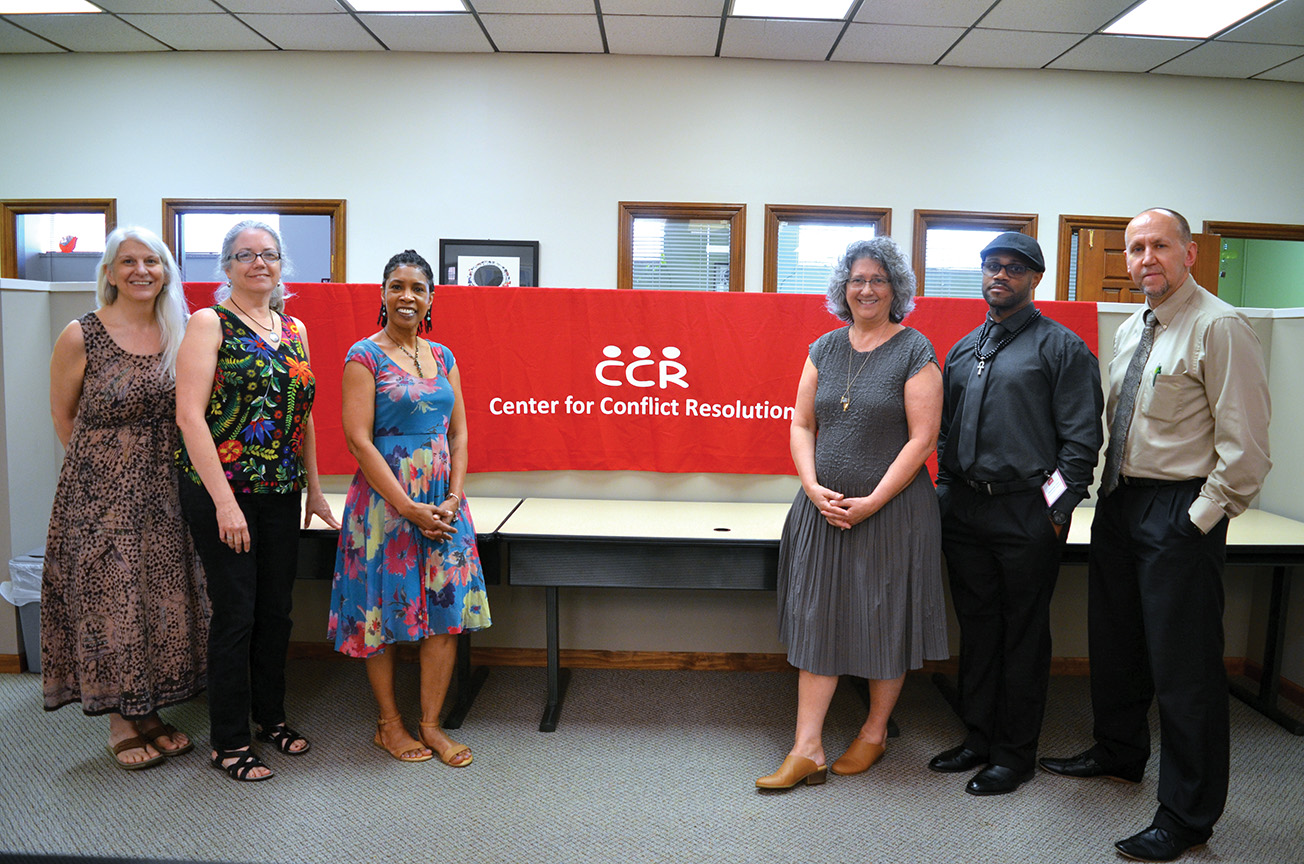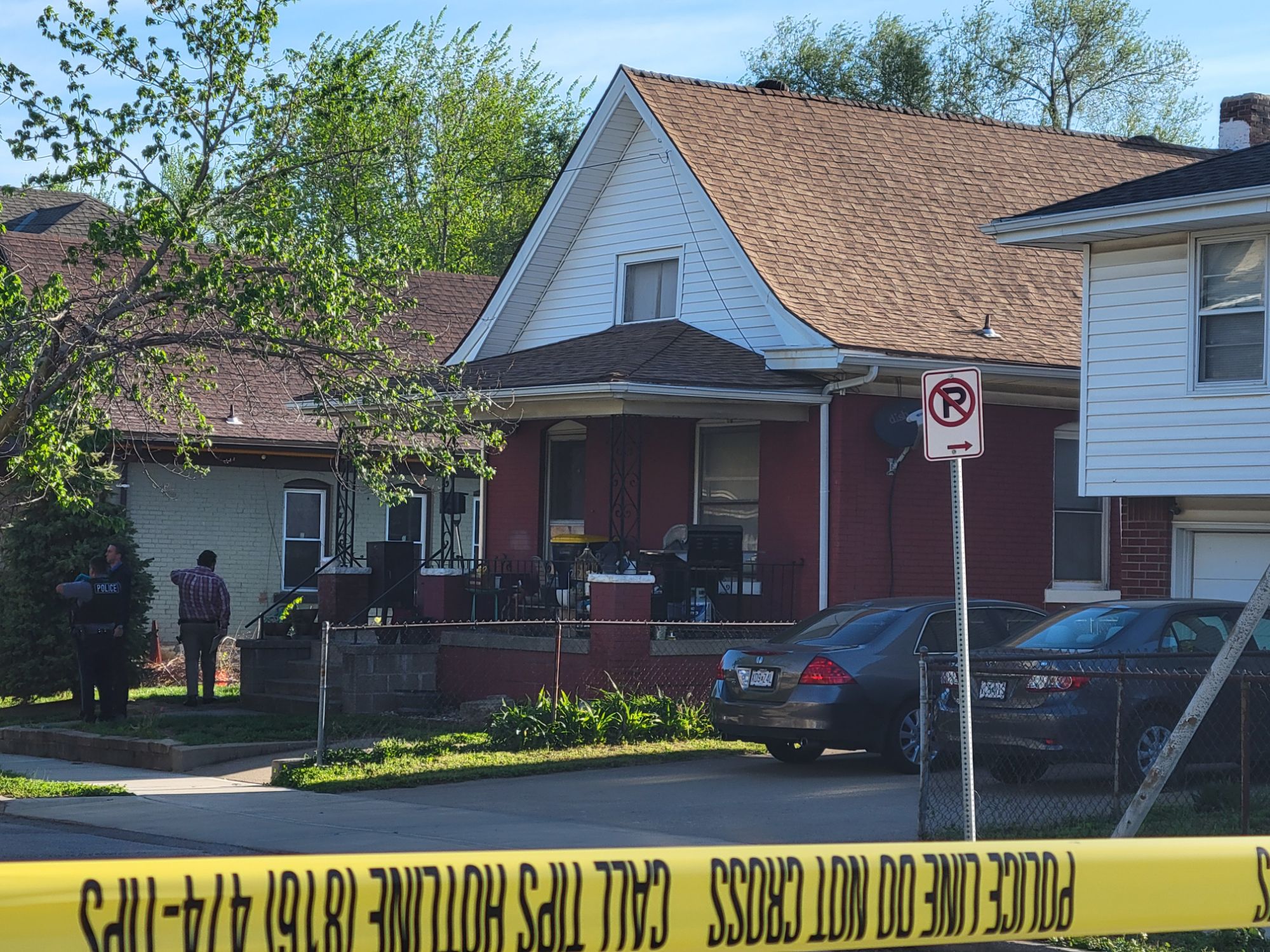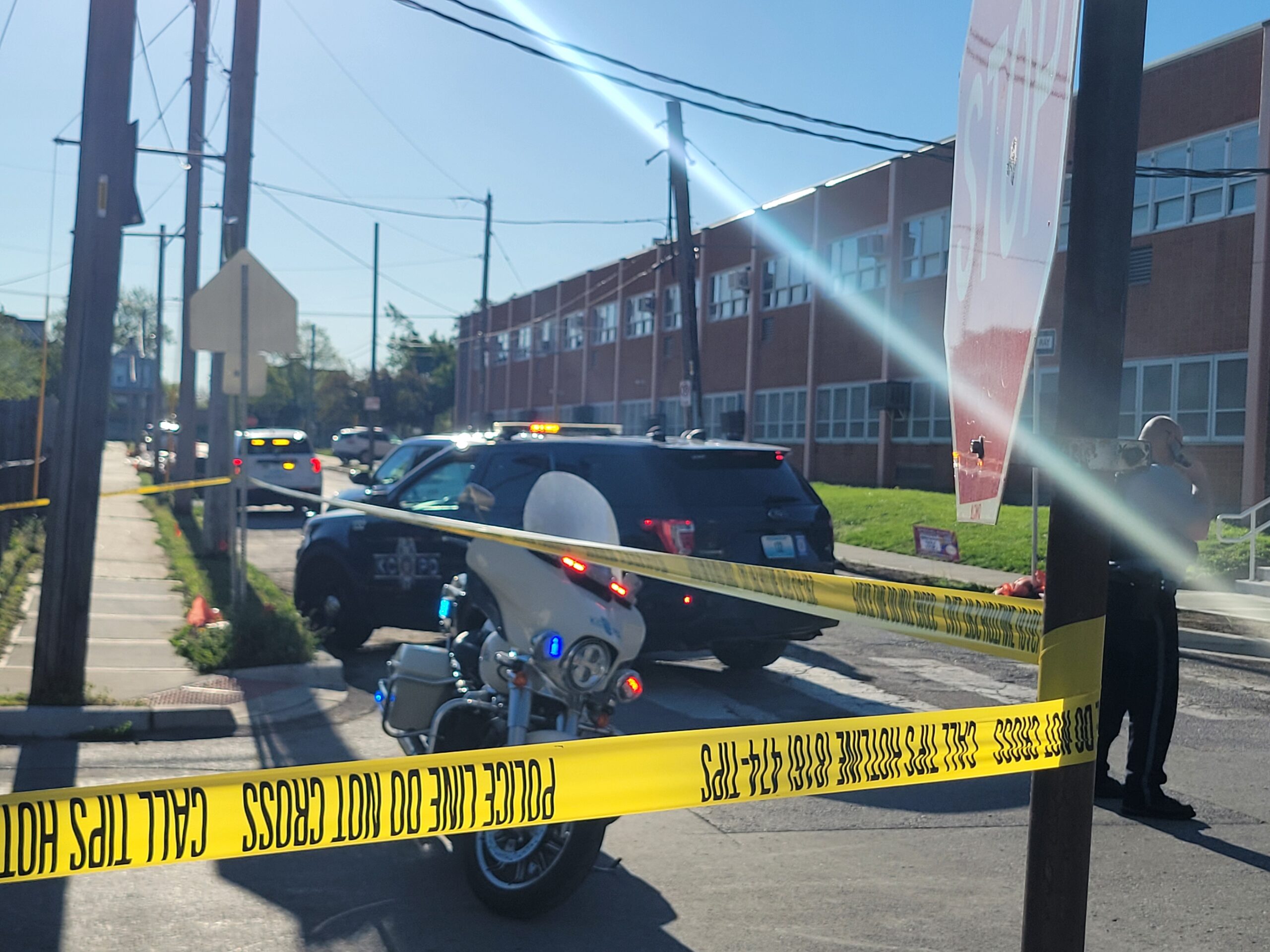Elizabeth Orosco
Northeast News
The Center for Conflict Resolution (CCR) is continuing to make strides to bring Restorative Justice to neighborhoods in Kansas City.
Mediation Coordinator Debbie Bayless and Executive Director Annette Lantz-Simmons discussed the process compared to the traditional criminal justice process, what makes Restorative Justice different, how it combats crime, and how neighborhoods can get involved to implement this in their communities.
The Center for Conflict Resolution is a nonprofit organization that has operated in Kansas City since 1999. The mission of the CCR is to help people solve conflict by providing a safe, structured and positive environment where individuals can choose understanding over escalating conflict, processes that empower people to resolve, manage and transform conflict in their lives, and training that imparts the skills and tools necessary to create peaceful solutions and restore relationships.
Restorative Justice states that people are capable of solving problems in their lives when they are supported by respectful processes that encourage responsibility and collaboration.
Neighborhood Accountability Boards (NAB) are Restorative Justice Processes where trained community members collaborate with those directly affected by harm in finding solutions that meet everyone’s needs.
“It looks at trying to include everyone’s voice and perspective, upholding everyone’s dignity, and identifying what processes does that look like to each specific community,” said Bayless. “It’s not a set process; it’s molded to whatever is going on in whichever community.”
“Restorative Justice has been around since the beginning of time,” said Lantz-Simmons. “People have dealt with things in a circle and heard every voice so we don’t own this at all. We know that communities are stronger when people have a voice and are helping to make it better and not separating people from their communities or families like what happens when they go to prison.”
Bayless added that Restorative Justice process differs from the criminal justice system in that those who are directly affected by a situation have a say in the process.
The Center for Conflict Resolution was awarded a Smart Prosecution Grant by the Jackson County Prosecutor’s Office, Jean Peters Baker, to take on 10 cases over the last year and navigate each party through the Restorative Justice Process.
Bayless said they are finishing up their tenth case and overall, the program was successful.
The process for this program began with the Assistant Jackson County Prosecutor assigning cases to CCR based off various criteria. Then, CCR conducted intake evaluations to ensure that each party agreed to continue with the process.
Bayless said the offender in each case must admit guilt to the incident and be willing to agree to and complete the entire process, otherwise the case would revert back to the court system.
This requires the offender to take responsibility and be held accountable for their actions.
While the offender must be willing to admit guilt and participate, the victim must also agree to the process.
“We don’t want to re-victimize anybody,” said Bayless. “So, we make sure that the victim is ok with proceeding with this kind of process. It’s always victim-driven. We make sure the victim has done enough healing to be in the presence of someone that has harmed them ”
After both parties are assessed and agree to the Restorative Justice process, a meeting is facilitated and coordinated with the Neighborhood Accountability Board where the parties discuss the incident from their individual perspectives.
This is a time where the victim is able to express what happened to them, how it impacted them, and what they need for it to be made right. The offender is given a chance to apologize and discuss their side of the incident.
“Looking the person in the eye that you’ve hurt, seeing how it’s affected them, hearing how it’s changed their life and what they need, is very impactful and helps build empathy and understanding about why something like this was wrong,” said Bayless.
“When we do these processes,” said Lantz-Simmons, “the person who offended often says this is the hardest thing they’ve ever done, to have to look at the person that they’ve harmed. When they go through court, they don’t have to take any responsibility, in fact, they’re told not to admit to anything. It’s not easy to look at someone that you hurt. Something really chilling takes place in these meetings that never happens in court.”
A plan is then put in place that the victim feels is thorough and that also meets the needs of the offender, such as a job, schooling, mental health or substance abuse counseling.
“It becomes this holistic process where the harm is addressed, obligations are met, and the next step is taken. It’s a very personal, grassroots way of doing things,” said Bayless.
If the offender agrees to the process and completes the finalized plan, the charges are dropped. If the individual does not complete the process, the case is put back through the court process.
Restorative Justice looks at the needs of both parties because violence, Lantz-Simmons said, does not come out of nowhere. It is born out of unmet needs, trauma, stress, and just not knowing another way.
“We believe violence happens because people can’t see another way out. I don’t believe people want to be violent, but they don’t see another way. If their dignity is violated and they’re not respected, then that’s all they know to do is to cause harm in return,” she said.
While crime reduction is not the main focus of Restorative Justice, Bayless said that it is usually an outcome of the process.
“Crime is the result of something,” Bayless said. “There is some kind of tension, trauma, or unmet need going on in the community and instead of saying ‘You did something wrong and I’ll punish you,’ we look at what is going on and what the needs are and address those so the person is not in the state of violence and needing to exert themselves that way. We look at needs, talk through problems, and give a safe space to everyone.”
While this process of admitting fault, apologizing to the person who you have harmed, and figuring out how to move forward from there does not seem revolutionary, Lantz-Simmons said as children, many people are not taught basic conflict resolution skills.
“Unless we have a model for it, we don’t just automatically come into the world knowing those things. We find parents that tell their child if someone comes at you, you need to hit them first. Kids are getting messages from adults that are not helpful. There are things we can do to start thinking different than ‘if someone hurts me, I hurt them back.’”
So what is the outcome of the Restorative Justice process?
Bayless and Lantz-Simmons said by comparing the recidivism rate— the tendency of a convicted criminal to reoffend— of the criminal justice system to the Restorative Justice system is a sign of which process “works.”
Recidivism is measured by criminal acts that resulted in rearrest, reconviction or return to prison following the prisoner’s release.
The Bureau of Justice Statistics studies have found high rates of recidivism among released prisoners according to 2018 Update on Prisoner Recidivism: A 9-Year Follow-up Period (2005-2014), a publication by Mariel Alper, Ph.D., Matthew R. Durose, BJS Statisticians, and Joshua Markman, former BJS Statistician.
This research examines the recidivism patterns of former prisoners during a nine-year follow-up period.
The researchers found that the 401,288 state prisoners released in 2005 had 1,994,000 arrests during the 9-year period, an average of five arrests per released prisoner.
Sixty percent of these arrests occurred during years four through nine.
An estimated 68 percent of released prisoners were arrested within three years, 79 percent within six years, and 83 percent within nine years.
Bayless and Lantz-Simmons said that 85 to 90 percent offenders who have gone through Restorative Justice, took responsibility for their actions, saw how it impacted the other person, apologized, and moved forward with an action plan do not reoffend.
According to their website, the Center for Conflict Resolution serves an average of 400 residents in prison per year.
While Bayless and Lantz-Simmons did not have an exact number, they estimated that the cost to take an offender and victim through the Restorative Justice process is a mere fraction compared to the price tag attached to the criminal justice system.
If such an effective method, why is Restorative Justice not applied in more cases? Bayless said it’s not popular and it would take people advocating for Restorative Justice process and asking for another method outside the traditional court process.
When CCR goes into neighborhoods to discuss the Restorative Justice process, Bayless and Lantz-Simmons said the neighborhoods are in full support.
“They have no power in a system where it’s the judge and the prosecutor who decide what’s going to happen. Now, they have all the power in a process like this.”
Bayless said the Restorative Justice process can be used in a variety of conflict-centered situations including neighbor disputes, shoplifting, trespassing, vandalism, school conflict, family disagreements, and housing code violations.
The Center for Conflict Resolution recently announced they will also have a satellite location at the Gregg Klice Community Center to offer free services.
CCR signed a contract with Kansas City Parks and Rec, who will partially fund the project, along with other donors including the Hall Family Foundation, the Dunn Family, and the Tabitha Foundation.
The kick-off event will be Monday, June 17 at 2 p.m.
“It’s moving what we do a little closer to neighborhoods that might need us,” said Lantz-Simmons.
The Center for Conflict Resolution is offering a variety of classes and services to learn more about the Restorative Justice Process.
Free Neighborhood Accountability Board Trainings will be held Saturday, June 29, and Saturday July 13 from 9 a.m. to 4 p.m.
Participants will learn the philosophy and ideas behind Restorative Justice, what it looks like, and different ways of understanding what conflict and harm is in communities.
CCR will also be offering a free “Family Conflict Resolution Night” on Wednesday, June 26 from 5 p.m to 7 p.m. at the North-East branch of the Kansas City Public Library at 6000 Wilson Avenue.
This is a fun, interactive workshop for adults and children ages four and up. Participants will learn what goes on in the brain when we are in conflict, what choices we have in conflict, and how behavior affects conflict.
“We aren’t trying to be the only ones that do the Neighborhood Accountability Boards,” said Bayless. “Restorative Justice is something that, as long as you’re treating people with dignity, it’s something that anybody can do. It’s really a lot simpler and creates positive, healthy communities when you address things with each other.”
For more information on the NAB training, email Dina Newman at newmandi@umkc.edu or call 816-235-6931. To RSVP to the “Family Conflict Resolution Night,” call the library at 816-701-3400.



















